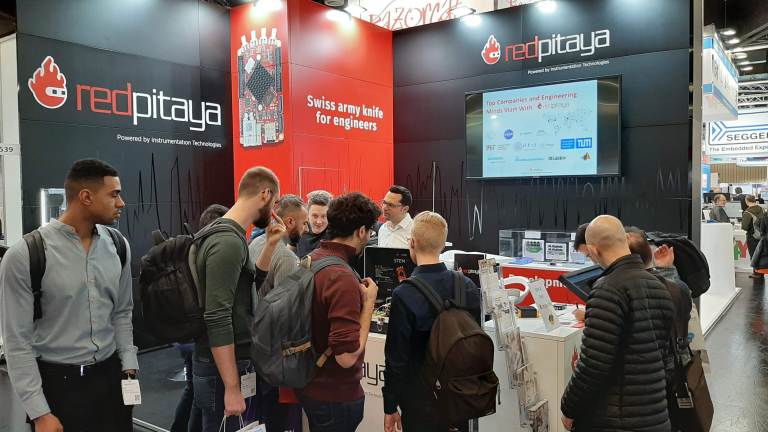Embedded World 2020 highlights
-
Posted by
 Red Pitaya Team
, July 1, 2020
Red Pitaya Team
, July 1, 2020

The Embedded World Conference and Exposition in Nuremberg, Germany, is always a great event to attend. A key trade show in the electronic design engineering community, Embedded World is where people come to meet and exchange the latest information, products, ideas, and technology. Being there reminds you that a marketplace is made up of people, and the Things are there as the stock in trade for the various merchants selling their wares and services at the bazaar. With 1,117 exhibitors from 42 countries showing those wares to 31,000 visitors from 84 countries, and 2,000 conference participants from 46 countries, give strength to the organizer’s claim to fame that this event is one of, if not the, world's leading trade fair for embedded system technologies. In addition to the exhibition, there were also 10 conference clusters, with 250 presentations by international experts in 42 sessions and 12 classes.
The event underscored the explosive growth of the Internet of Things (IoT), with major verticals carving out their own versions of it. From automotive to agriculture, Cloud-based embedded engineering solutions were available from multiple vendors. Just about every conceivable application space was addressed with the latest solutions capable of being created.
A new player in the space, Red Pitaya, is a good example of the kind of measurement accuracy today’s tech demands. The result of a Kickstarter-fueled spin-off from Instrumentation Technologies, represents the move to high performance, open-source, reconfigurable instrumentation, manifested in its palm-sized STEMlab test platform. The device can function as an Oscilloscope, Logic Analyzer, Signal Generator, and Spectrum Analyzer, among other functions, as well as perform other tasks like vector network analysis. Based on the Xilinx Zynq 7010, the STEMLab also has an ergonomic design, with a curved front carrying input and output connectors. The STEMlab 122.88-16 SDR comes with two 16-bit ADCs with 50 ohm inputs, and 14 bit DACs with 50 ohm outputs. It uses the dual-core ARM Cortex A9 and the Xilinx Zynq 7020 FPGA plus an ultra-low phase noise 122.88MHz clock. Its 1Gbit Ethernet connectivity and RF inputs have been improved over its predecessor in terms of distortion, noise, and crosstalk.
About the Red Pitaya Team
The Red Pitaya editorial team consists of engineers, researchers, and product experts who develop and test cutting-edge open-source test & measurement solutions.
Our mission is to make advanced instrumentation accessible to everyone — from students and educators to leading research labs worldwide.



